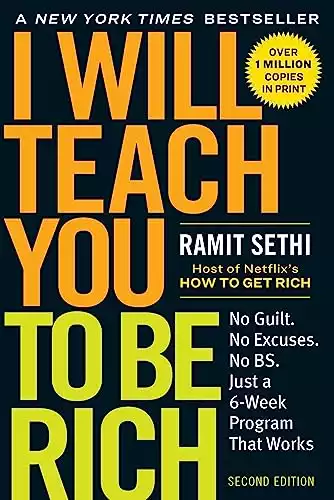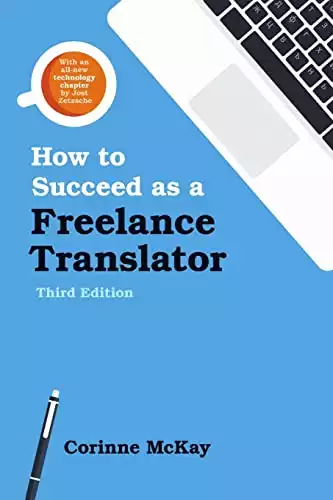Looking for the best books for a translator in 2025? With so many free online dictionaries and language forums, today’s translators want a well-curated collection for their bookshelf.
Whether it’s translation theory, business books, dictionaries or translated literature you’re looking for, this list is for the times when the right book beats a website.

DISCLOSURE: We sometimes review or link to products and services we think you might find helpful. Wherever possible we use referral links. This means if you click one of the links and make a purchase, we may receive a small commission or other compensation.
What’s on my translator bookshelf?
Translation is a complex art. It combines professional writing, editing and proofreading skills with knowledge of translation theory and terminology research. So, when deciding which style guides and books about translation to buy, I take a less-is-more approach and prefer to have lots of different subjects on my translator bookshelf.
This article will tell you what I think are the best books for a translator to buy. They’re publications that I keep near my desk and use in my own life. Reference books about English and other languages are a key feature in my list, but there’s also some business reading, books about translation theory and even a love story. I hope you’ll find inspiration here.
If you’re looking for which DipTrans and CertTrans reference books to buy, the list below has some good ideas.
Tip: We regularly update our posts and do our best to link to the latest edition. Do check the year and make sure a newer edition of the book hasn’t been published.
1. Translation theory: In Other Words
If you want to read books about translation, In Other Words by Mona Baker is arguably the best translation theory book. If you enjoy this leading translation studies publication, perhaps you’ll be inspired to read more books about the translation discipline. If not, at least you’ll accrue plenty of useful translation theory that you can apply in your work. You’ll also get a sense of being very intellectual.
2. General style: New Hart’s Rules
Sometimes, the vastness of the Internet is unhelpful for the translator because it gives you too many options. This can be particularly problematic where style is concerned. Not only do you have to figure out differences between UK and US English, but you also have to contend with all the different house styles applied by publishers and institutions.
The information overload can lead you to waste time as you dither about which style to follow. That’s why I keep the New Hart’s Rules style guide on my shelf and why I tend to pick it up rather than asking Google. It gets me to consistent results more quickly. For me, Hart’s is the best style guide in book format.
This is a good go-to style guide for anyone in the language industry. If you’re the translator and a client queries your translation decisions, you can use it to back yourself up. If you’re the editor, then you can use it to help you offer guidance to the translator or writer.
On the downside, Hart’s is about general rules and you may find it lacking if you want something very prescriptive. See point three.
Get New Hart’s Rules.
3. Money management
Don’t be put off by the title of this book. There’s nothing superficial about Ramit’s money guidance. This book is a must-read for everyone who wants to understand how to manage their money and retire wealthy. Get your copy now and get one for your kids and best friend while you’re at it.
4. Newspaper style: The Economist Style Guide
There’s no single best choice when it comes to picking your style guide but I find this compact book very useful. I don’t always agree with the recommendations in The Economist Style Guide but I find it efficient when I want someone to just tell me what to do here. I tend start by looking in Hart’s and then, if there isn’t enough detail there, I turn to The Economist. That’s why I keep both on my shelf.
Check out The Economist Style Guide.
5. Translation practice: Thinking Translation series
This is a classic series of books about translation. You’ll often find them on the reading list of an MA in translation studies. They’re available for the language combinations of Spanish, French, German, Italian, Chinese and Arabic to English, and there’s one about analysing English source texts.
These books won’t make you into a professional translator but they’ll give you a basis to start from. If you want to be a professional translator, you need feedback from a translation teacher. Check out our translation courses, available with DipTrans preparation.
See the books in the Thinking Translation series.
6. For the love of a beautiful thesaurus: The Oxford American Writer’s Thesaurus
What we think: Well worth the price for the quality of the product and range of vocabulary.
This isn’t about having to buy a thesaurus. It’s about wanting to buy a thesaurus. Well, if you’re sitting the DipTrans exam, you have to buy one, so you might like to see this article on the best English thesaurus. I love my Oxford American Writer’s Thesaurus because it looks nice on my shelf and, when I search for a word, I find one without being overwhelmed. You sometimes get usage information and quotes, and there are lots of cool word lists in the middle. The price is reasonable, too.
See the Oxford American Writer’s Thesaurus.
7. For want of a physical bilingual dictionary
You can read all about our research into bilingual dictionaries in this article for Spanish-English dictionaries and this article for French-English dictionaries.
If you just want to know what we bought, here’s the spoiler.
Best French-English bilingual dictionary: Oxford-Hachette French Dictionary.
Best Spanish-English bilingual dictionary: Collins Spanish Dictionary Complete and Unabridged.
If you know which is the best bilingual dictionary for another language combination, email us and we’ll add your recommendation.
8. For marketing copy: Everybody Writes
What we think: our top pick to learn how to write marketing content.
I’m a massive fan of Anne Handley and you will be too if you buy what is quickly becoming a classic book for writers. It’ll serve a double purpose for you. First, as an entrepreneurial linguist, you can apply what she teaches to your own marketing copy and social media. Second, you can apply what she teaches to your translations of your customers’ marketing content.
Check out Everybody Writes.
9. For legal terminology: Thematic Lexicon of Legal Terminology
This one is just for Spanish-English translators. It’s one of the few specialist dictionaries I’ve ever bought and it quickly paid for itself by getting me out of more than one hot spot.
I bought the digital version, which is easy to search but very slow to load. I kind of regret not buying the physical version because I think I’d pick it up more readily and perhaps actually read it over a cup of tea from time to time.
There’s a lot of knowledge within its pages. The book pays for itself quickly in terms of time saved and being able to tell your client that you used an authoritative source for your terminology. If you’re a legal translator, you’ll perhaps know that Rebecca Jowers has given extensive terminology help to the translation community through the terminology forums on ProZ.com. I was therefore pleased to be able to thank her by buying her book.
View Thematic Lexicon of Legal Terminology.
10. For English grammar: About Language
This may seem an odd recommendation. I found this book long ago in my TEFL teaching days. It really helped me get my head around the subtleties of English grammar. I liked it because it involved a quick read and then some exercises, which meant I didn’t experience the exhaustion you tend to get from reading a heavy grammar book.
This is the best book I’ve found for native English speakers and bilingual people who want to improve their advanced English grammar. If English is your second language then I wouldn’t choose this option. Try Advanced Grammar in Use from Cambridge.
Check out About Language.
11. For putting that comma in just the right place: Eats, Shoots & Leaves
What we think: This book is a punctuation classic. It'll help you understand the difference between good and bad punctuation while keeping you entertained along the way.
An oldie but a goodie. The thing about Eats, Shoots & Leaves is that it makes you laugh. Learning about punctuation and laughing is an excellent combination to improve your writing. With all my many house moves, I’ve really whittled down the books on my shelves. But the panda on my hard-cover version of this punctuation classic always makes it into the removal box.
View Eats, Shoots & Leaves.
12. Because a translator is a reader first: Love in the Time of Cholera
Well, where else on this blog do I get to recommend my favourite novel? I read the English translation years ago. Now, I travel about with a copy in García Márquez’s original Spanish that I’m still to complete, quite a challenging read in your second language. But if you’ve never read this novel, definitely do so in one language or another.
Get Love in the Time of Cholera.
13. Business Advice for Translators
Let Corinne McKay guide you through the basics of launching your career in the world of language services.
Join one of our courses!
Nothing beats the help of a dedicated teacher. With our hallmark extremely detailed feedback, we’ll help you take your translation, writing, editing and proofreading skills to the next level.
|
|
- Become a confident professional translator
- Learn fast with our extremely detailed feedback
- Prepare to pass the CertTrans exam
- Get your translation certificate
- Network in our private Facebook group
- Become a more successful translator
- Learn fast with our extremely detailed feedback
- Prepare to pass the CIOL DipTrans exam
- Get your advanced translation certificate
- Network in our private Facebook group




















0 Comments